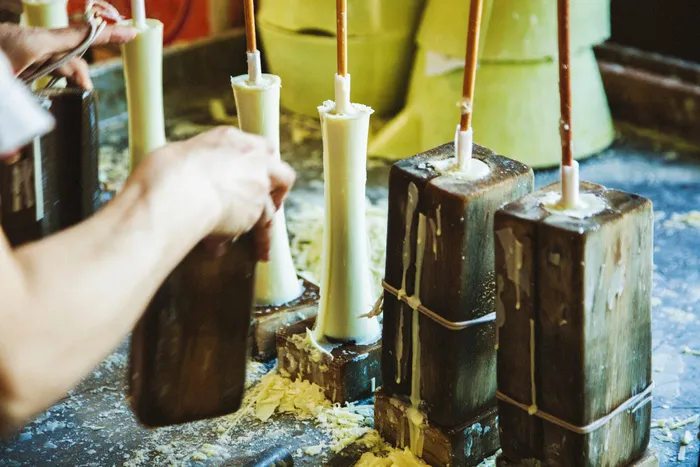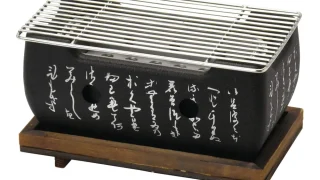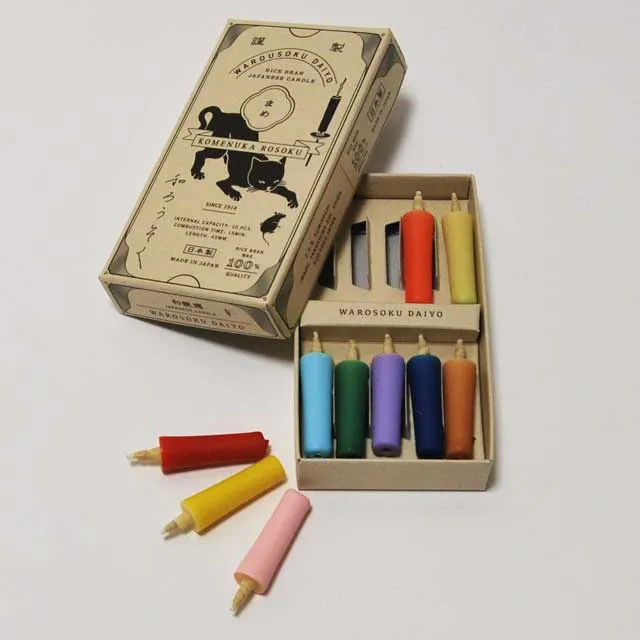Japanese traditional candle history
Candles have been used since the days of sun worship. It is known that it existed in Europe and China around the 3rd century BC. The Greeks also used bundles of papyrus grass or reed leaves and candles coated with beeswax or animal fat. It is a little different from the candles used today, but unlike today, in a time when there was no electricity, candles were used mainly for religious ceremonies in palaces and temples as a valuable tool to illuminate dark places. was used.

Candles were thought to have purifying powers It is believed that the light of candles wards off evil spirits, wards off evil, purifies the surroundings, and brings good luck. On the other hand, it has a valuable role as a light that illuminates the darkness of life, and has been indispensable in the long history until the spread of electric lights. What a long history, from torches of primitive times, to animal fat and beeswax collected from beehives, to Japan wax collected from beehives, to paraffin candles.
The history of Japanese candles
Candles were introduced to Japan in the latter half of the 6th century (Kimmei 7, 538) through Baekje, along with the introduction of Buddhism to India. At that time, honey wax was used for candles, but it was very expensive and was only used for special events such as Buddhist ceremonies and prayers in aristocratic society and temples. From the late Kamakura period to the period of the Northern and Southern Courts, lacquer wax was introduced from China, and even the samurai class began to use candles. Lacquer candles began to be manufactured in the Echigo and Aizu regions in the Muromachi period. rice field. From the Muromachi period to the Azuchi-Momoyama period (16th century), in addition to lacquer, candles were made using the oil collected from the seeds of goby. Mass production of candles became possible in England in the mid-18th century. With the discovery of paraffin from petroleum, paraffin candles were produced and spread rapidly.
*Click here for Japanese candle items
Candle quality
Candles that do not droop, bend, or smother are said to be of good quality. In addition to the melting point, penetration, light resistance, and heat resistance of paraffin wax, quality is also determined by whether the wax is appropriately attached to the core thread during the manufacturing process and whether the core thread passes straight through the center of the candle. will be left or right.

- Melting point: the temperature at which the mass of paraffin wax begins to melt
- Penetration: How many millimeters a needle of a certain thickness can penetrate a lump of paraffin wax with pressure per gram
- Lightfastness: Does paraffin wax change color when exposed to sunlight?
- Heat resistance: how many degrees paraffin wax is deformed
If the candle is not attached to the core thread, only the core thread will burn out and disappear.
If the wick is not set in the center of the candle, the wax will flow out.
Why do candles burn?
When the candle is ignited, the melted wax rises up the wick by capillary action. As the first drop rises, it continues through cohesion. The wax that rises to the tip of the wick gasifies and becomes a flame due to its high temperature. If you put the candle close to the flame immediately after extinguishing it, it will ignite because of the gasified vapor. A candle does not burn down the wick because the melted wax extinguishes the flame. A good candle has an exact balance between the quality of the paraffin, the thickness of the candle, and the wick, so that it always burns completely with a constant brightness without soot. Also, dust and impurities can clog the wick, so store the candle in a small box.
Author Profile
Latest entries
 matcha bowl / Yunomi tea cup2025年1月21日Kutani ware teacups are very easy to use
matcha bowl / Yunomi tea cup2025年1月21日Kutani ware teacups are very easy to use Japanese style BBQ stove grill2025年1月20日Combine a Japanese style BBQ stove grill and sake cups for a special dinner
Japanese style BBQ stove grill2025年1月20日Combine a Japanese style BBQ stove grill and sake cups for a special dinner SAKE bottle and SAKE cup2025年1月17日Mino Ware Gold-painted Sake Ware is Very Beautiful
SAKE bottle and SAKE cup2025年1月17日Mino Ware Gold-painted Sake Ware is Very Beautiful NEWS2025年1月17日Tatami rush grass nap Fluffy Foldable Sleeping Mattress is comfortable
NEWS2025年1月17日Tatami rush grass nap Fluffy Foldable Sleeping Mattress is comfortable



